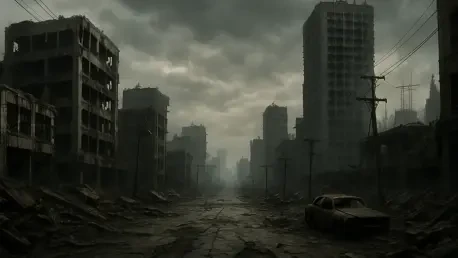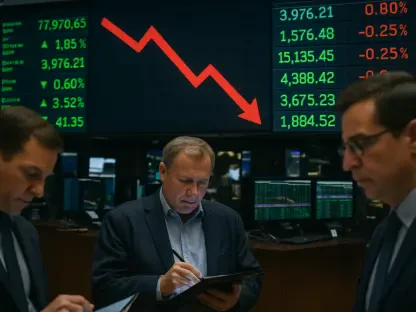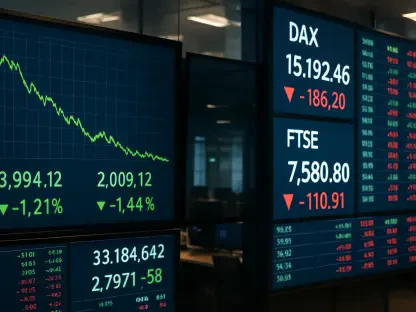In a sobering address to the European Parliament on November 11, 2025, John J. Mearsheimer, a distinguished realist scholar, delivered a powerful message about the dire state of Europe’s security landscape, as later published in Foreign Affairs under the title “Europe’s Bleak Future.” His speech paints a grim picture of a continent grappling with the fallout of the Ukraine war and seismic shifts in global power dynamics. Mearsheimer argues that the stability Europe once enjoyed in the post-Cold War era has been irreparably damaged by current conflicts and misguided policies. His analysis pinpoints the Ukraine war as a pivotal event, exacerbating tensions and undermining the foundations of regional peace. Beyond the immediate crisis, he warns of broader geopolitical changes, particularly the transition from a unipolar world led by the United States to a multipolar one with rising powers like China and Russia. This shift, coupled with contentious Western strategies, threatens to leave Europe vulnerable to both internal discord and external threats. Rooted in realist international relations theory, Mearsheimer’s perspective challenges conventional narratives, urging a critical reassessment of the policies driving Europe toward an uncertain future. This article delves into the core of his arguments, exploring the causes of Europe’s instability, the devastating consequences of the ongoing conflict, and the evolving global order that continues to reshape the continent’s destiny.
Unpacking the Ukraine War’s Role in European Instability
The Ukraine war stands as the central force behind Europe’s current state of unrest, according to Mearsheimer’s stark assessment, and since its eruption in 2022, the conflict has not only devastated Ukraine but also sent shockwaves across the continent, dismantling the relative calm that characterized post-Cold War Europe. Mearsheimer contends that Western actions, particularly the push for NATO expansion, acted as a catalyst for this crisis, provoking a response from Russia that has fundamentally altered the regional security environment. The destruction in Ukraine—marked by significant territorial losses and immense human suffering—serves as a tragic reminder of the war’s toll. However, the impact extends far beyond Ukraine’s borders, as Europe now faces heightened insecurity and a fractured geopolitical landscape. The ripple effects of this conflict have poisoned relations with Russia, creating a volatile atmosphere where trust and cooperation seem increasingly out of reach. Mearsheimer’s analysis suggests that this war is not merely a regional issue but a defining moment that has set Europe on a dangerous path, with lasting implications for its stability and future.
Economic and political challenges further compound the security risks posed by the Ukraine war, highlighting the multifaceted impact of this conflict on Europe and beyond. Europe has borne a heavy burden, particularly through disruptions in energy supplies due to severed ties with Russia, a major provider of natural gas and oil. This dependency has left many European nations grappling with rising costs and economic strain, hindering growth across the Eurozone. Politically, the conflict has deepened divisions within and among member states, as differing views on how to respond to the crisis fuel tensions. Mearsheimer warns that these fractures could undermine the cohesion necessary for a unified European response to ongoing and future threats. The war’s ability to destabilize not just Ukraine but the broader region underscores the urgent need for a reevaluation of strategies that have led to such widespread fallout. As hostility with Russia persists, the prospect of a return to stability appears dim, leaving Europe to navigate a treacherous landscape marked by uncertainty and risk.
Global Power Shifts and Their Impact on Europe
The transition from a unipolar to a multipolar world forms a critical backdrop to Europe’s current predicament, as outlined in Mearsheimer’s address, highlighting a significant shift in global power dynamics. During the unipolar era following the Cold War, the United States wielded unparalleled influence, acting as a stabilizing force in Europe through its dominant role in NATO. This period saw an absence of peer competitors, allowing significant American resources to be devoted to maintaining security across the continent. However, with the emergence of China and Russia as major powers by 2017, the global order has shifted dramatically. Mearsheimer argues that this multipolar reality has redirected U.S. strategic priorities, particularly toward countering China’s rise in East Asia. As a result, the incentive for the U.S. to sustain a robust military presence in Europe has diminished, raising questions about the durability of the security framework that has long underpinned European stability. This shift marks a profound departure from the conditions that once fostered peace, leaving the continent exposed to new vulnerabilities.
Compounding this challenge are additional U.S. commitments that further dilute its focus on Europe, creating a significant shift in global priorities. Mearsheimer highlights the deep ties to Israel, driven by domestic political considerations, which divert resources and attention to the Middle East. This reorientation, combined with the pivot to Asia, signals a potential reduction in the American security umbrella that Europe has relied upon for decades. The implications are far-reaching, as NATO’s effectiveness hinges on U.S. leadership and military support. Without this backing, Europe risks facing both internal conflicts and external pressures without a reliable guarantor of peace. Mearsheimer’s analysis underscores the structural challenges posed by multipolarity, suggesting that Europe must prepare for a future where it may need to stand on its own. The erosion of the transatlantic security bond, once a cornerstone of stability, presents a daunting obstacle as the continent navigates an increasingly complex global landscape.
NATO Expansion as a Trigger for Conflict
A cornerstone of Mearsheimer’s critique lies in his condemnation of NATO’s eastward expansion, which he identifies as the primary trigger for the Ukraine war, a conflict that has reshaped geopolitical dynamics in Eastern Europe. The decision at the 2008 Bucharest Summit to pave the way for Ukraine’s inclusion in the alliance was, in his view, a grave misstep that Russia perceived as an existential threat. This perception led to a preventive military response aimed at blocking Ukraine’s integration into the Western security structure. Mearsheimer challenges the prevailing Western narrative that frames Russia’s actions as driven by imperialist ambitions, arguing instead that the goal was to enforce Ukrainian neutrality and halt NATO’s encroachment. He points to warnings from some Western policymakers and strategists prior to the conflict, who anticipated Russia’s backlash against such expansionist policies. This perspective casts the war as a predictable outcome of strategic miscalculations rather than unprovoked aggression, urging a deeper examination of the decisions that escalated tensions to this critical juncture.
The consequences of NATO’s expansionist approach have been catastrophic, not only for Ukraine but for Europe as a whole, as the policy has triggered profound losses and ongoing crises. Ukraine has endured significant setbacks, including territorial concessions and economic collapse, while the human cost continues to mount. For Europe, the fallout includes strained relations with Russia that show no signs of abating, fostering an environment of mutual distrust and hostility. Mearsheimer argues that this policy was rooted in a form of hubris, underestimating Russia’s security concerns and overestimating the West’s ability to manage the repercussions. The resulting fracture in East-West relations has left Europe grappling with a security crisis of its own making. As the continent faces the enduring impact of this conflict, Mearsheimer’s critique serves as a cautionary tale about the dangers of pursuing policies without fully considering their geopolitical ramifications. The path forward, he implies, demands a reckoning with these past decisions to avoid repeating similar errors in the future.
Broader Repercussions of the Ukraine Conflict
The Ukraine war’s repercussions extend far beyond the immediate theater of conflict, casting a long shadow over Europe’s economic and political landscape. Mearsheimer details the staggering toll on Ukraine, which has lost approximately 22% of its pre-2014 territory to Russian annexation, alongside economic devastation and immense casualties. This has rendered Ukraine a dysfunctional state, heavily reliant on external support to survive. For Europe, the war has introduced significant economic challenges, most notably through the drastic reduction of energy imports from Russia. The resulting energy crisis has driven up costs and hampered growth across the Eurozone, affecting industries and households alike. This economic strain serves as a stark reminder of Europe’s vulnerability to disruptions in critical supply chains, particularly when geopolitical tensions sever long-standing trade relationships. The war’s impact on the continent’s prosperity underscores the interconnected nature of security and economic stability in today’s globalized world.
Politically, the conflict has exacerbated existing tensions within Europe, creating rifts that threaten collective action and highlighting the fragility of unity in the face of crisis. Disparities in national responses to the war—ranging from military support for Ukraine to diplomatic stances on Russia—have fueled discord among European nations. Mearsheimer warns that a potential Russian victory, even if limited in scope, would be perceived as a significant setback for NATO, triggering recriminations among member states. Such an outcome could weaken the alliance’s unity at a time when cohesion is most needed. The political fallout risks undermining the European Union as well, given its dependence on a stable security environment provided by NATO. As internal divisions deepen, Europe faces the dual challenge of managing domestic discontent while addressing external threats. Mearsheimer’s analysis highlights the urgent need for strategic alignment to mitigate the war’s long-term effects on the continent’s political fabric.
Strains on Transatlantic Security Ties
Transatlantic relations, a bedrock of European security since the end of World War II, are under increasing strain due to the Ukraine war and shifting U.S. priorities, which have created significant challenges for the longstanding partnership. Mearsheimer points to a growing reluctance in some U.S. administrations, notably during Trump’s tenure, to maintain unwavering support for Ukraine. This hesitation, coupled with calls for European nations to bear a greater share of NATO’s financial and military burden, has introduced friction into the partnership. The possibility of a U.S. military drawdown in Europe looms large, driven by strategic imperatives elsewhere, particularly in Asia. Such a withdrawal would effectively dismantle the pacifying role the U.S. has played in preventing intra-European conflicts and deterring external aggression. Mearsheimer’s warning is clear: without robust American involvement, the security architecture that has sustained Europe for decades could falter, leaving the continent to confront its challenges without a reliable ally.
The convergence of multipolar pressures and policy disagreements further heightens the risk of a fractured Western alliance, especially as the U.S. pivots its focus to countering China’s influence in East Asia, leaving Europe deprioritized in American strategic calculations. Mearsheimer argues that this shift, combined with domestic political dynamics in the U.S. that favor other regions like the Middle East, undermines the transatlantic bond at a critical moment. The potential erosion of NATO’s effectiveness poses a direct threat to European stability, as the alliance’s strength has long depended on U.S. leadership. For European nations, the prospect of facing security threats without American backing is a daunting one, necessitating a reevaluation of defense capabilities and alliances. Mearsheimer’s insights underscore the fragility of transatlantic ties in the face of global realignments, urging Europe to brace for a future where it may need to chart an independent course.
Battlefield Realities and Predicted Outcomes in Ukraine
On the military front, Mearsheimer offers a detailed examination of the Ukraine war, characterizing it as a grueling war of attrition reminiscent of historical conflicts like World War I, where prolonged stalemates and heavy casualties defined the battles. Russia holds substantial advantages in manpower and firepower, with troop numbers significantly outpacing Ukraine’s in critical areas. Artillery disparities and advanced weaponry further tilt the balance in Russia’s favor, despite considerable Western military aid to Ukraine. Mearsheimer notes that Ukraine faces severe constraints, including manpower shortages exacerbated by a smaller population base and issues like draft evasion. The reliance on foreign-supplied arms, while vital, cannot fully offset Russia’s industrial capacity to sustain prolonged combat. This imbalance suggests a trajectory where Russia is likely to maintain the upper hand, even if its gains come at a high cost. The military dynamics paint a sobering picture of the challenges Ukraine faces in resisting a better-equipped adversary.
Looking at potential outcomes, Mearsheimer predicts what he terms an “ugly victory” for Russia, where it might secure control over 20-40% of Ukraine’s territory. The remaining areas would likely form a weakened, dysfunctional state, heavily dependent on external support and unable to function as a cohesive entity. This scenario, rather than a complete Russian conquest, reflects both the limited nature of Russia’s strategic objectives and the fierce resistance in western Ukraine, where ethnic and cultural ties bolster opposition. Such an outcome would perpetuate regional instability, leaving a fractured Ukraine as a persistent source of tension. Mearsheimer’s forecast warns of a frozen conflict that fails to resolve underlying issues, ensuring that Europe remains entangled in the war’s aftermath. The likelihood of continued hostility suggests that battlefield results will shape the region’s security landscape for the foreseeable future.
Emerging Flashpoints and Persistent Hostility
Beyond the immediate Ukraine conflict, Mearsheimer identifies several geopolitical flashpoints that could ignite future tensions between Europe and Russia, highlighting the complex landscape of international relations in the region. The Arctic region, increasingly accessible due to melting ice, presents new disputes over resources and shipping routes, involving multiple NATO member states. The Baltic Sea, often described as a strategic zone dominated by NATO presence, alongside Russia’s Kaliningrad enclave—geographically isolated within NATO territory—creates a volatile mix of military posturing and potential miscalculations. Other areas, such as Belarus, Moldova with its Russian troop presence in Transnistria, and the Black Sea, further complicate the security environment. These zones of contention ensure that even if the Ukraine war transitions into a frozen conflict, the risk of escalation remains high. Mearsheimer’s analysis points to a broader pattern of enduring friction, where geographical proximity and competing interests sustain a cycle of mistrust and rivalry.
Europe’s ongoing commitment to supporting Ukraine adds another layer of complexity to these emerging flashpoints, and despite the economic and political costs, many European nations remain dedicated to bolstering Ukraine’s resilience. This stance guarantees continued hostility with Russia. Mearsheimer warns that this dedication, while rooted in principles of sovereignty and solidarity, locks Europe into a confrontational posture that limits diplomatic off-ramps. The persistence of such tensions across multiple regions underscores the challenges of achieving lasting peace. As potential conflicts loom on the horizon, Europe must navigate a landscape fraught with risks, where small incidents could spiral into larger confrontations. This forward-looking perspective emphasizes that the Ukraine war is not an isolated event but part of a broader struggle that will test Europe’s resolve and strategic foresight in the years ahead.
Internal Divisions and Economic Struggles in Europe
Within Europe, the Ukraine war has intensified pre-existing political and economic fractures, posing significant challenges to unity, and a potential Russian victory, even if only partial, would likely be interpreted as a defeat for NATO, sparking blame and recrimination among member states. Mearsheimer highlights how such perceptions could erode the alliance’s cohesion, as nations question each other’s commitment and contributions to collective defense. This internal discord threatens to weaken NATO at a time when a unified front is crucial for addressing both the current conflict and future threats. The political fallout extends to the European Union as well, which relies on a stable security environment to pursue its integration and economic goals. As disagreements over war strategy and resource allocation persist, the risk of deeper divisions looms large, potentially hampering Europe’s ability to respond effectively to crises.
Economically, the war has dealt a severe blow to Europe, with the reduction of Russian energy supplies hitting the Eurozone particularly hard, as Mearsheimer notes. The loss of affordable gas and oil has driven up energy costs, stifling industrial output and straining household budgets. Recovery prospects remain uncertain, as alternative energy sources and infrastructure adjustments require time and substantial investment. This economic downturn fuels public discontent, adding pressure on governments already navigating the political challenges of the war. The interconnected nature of Europe’s economies means that the pain is felt broadly, undermining confidence in regional institutions tasked with managing such crises. Mearsheimer’s warning is clear: without addressing these economic vulnerabilities and political rifts, Europe risks a prolonged period of instability that could unravel decades of progress toward integration and shared prosperity.
Reflecting on Europe’s Path Forward
Looking back, Mearsheimer’s address to the European Parliament served as a sobering reminder of the profound challenges that gripped Europe amid the Ukraine war, highlighting the deep-seated issues that continue to threaten regional stability. His analysis traced the conflict’s roots to NATO expansion, a policy that provoked a devastating response and shattered the continent’s security framework. The war’s toll on Ukraine, coupled with economic struggles and political discord across Europe, painted a picture of a region in crisis. The shift to a multipolar world further strained transatlantic ties, as U.S. priorities drifted away from Europe, threatening NATO’s viability. Mearsheimer’s predictions of an “ugly” Russian victory and persistent flashpoints highlighted the enduring nature of these tensions, leaving little hope for immediate resolution.
Moving forward, Europe must confront these challenges with a renewed focus on strategic adaptation and resilience, recognizing the need for a unified approach to address ongoing geopolitical tensions. Strengthening internal unity within the European Union and NATO should be a priority to counter political fragmentation. Investing in energy independence and diversifying supply chains could mitigate economic vulnerabilities exposed by the conflict. Additionally, exploring diplomatic avenues, even if limited, might reduce the risk of escalation at emerging flashpoints. Mearsheimer’s realist lens urges a pragmatic reassessment of policies to prioritize stability over ideological pursuits. While the road ahead remains fraught with uncertainty, proactive measures to bolster defense capabilities and foster dialogue could help Europe navigate this turbulent era, potentially laying the groundwork for a more secure future.









